There are few characters in automotive history that were as bizarre, or more ingenious, than Alessandro de Tomaso, the Argentinian racing driver turned car manufacturer.
For many years he seemed destined to emulate the famous Bucciali brothers of the twenties and thirties who designed magnificent cars to be exhibited at motor shows, but seldom deigned to build one for a customer.
De Tomaso was born in Argentina, but he emigrated to the United States in his youth and there he met and married Isabel Haskell, a wealthy American girl. Together they took up motor racing, concentrating on Sports Car Club of America road racing, usually with OSCA cars.
They sometimes partnered each other in long distance races with moderate success and, in the late 1950s, they came to Europe to race their small capacity OSCAs. They naturally gravitated to Modena in Italy where the OSCA was built by the Maserati brothers and, in 1959, de Tomaso decided to set up as a racing-car manufacturer.
He took a small workshop in Modena and, after dabbling with small-capacity, single-seaters, threw himself in at the deep end by developing a Formula One car for the new It-liter Formula which commenced in 1961.
He turned to his friends at OSCA for the engine, using their twin-overhead-camshaft, four-cylinder, 1500 cc engine, but it was really only a sports-car engine and it lacked the power even of the four-cylinder Coventry Climax engine.
He switched to the Alfa Romeo engine but this again was a four-cylinder, twin-overhead-camshaft production Giulietta engine which was not competitive. The car followed contemporary Cooper lines and was neatly made but, although competent drivers such as Nino Vaccarella, Giorgio Scarlatti, and Roberto Businello drove the cars, they seldom managed to finish or even put up a good performance.
De Tomaso's Short Lived Formula One Engine
Rather than buy a competitive engine from another manufacturer, de Tomaso began to develop his own Formula One engine, a flat-8, 1½-liter unit. This duly appeared in late 1963 but, after a brief practice appearance, it was quietly put away, never to re-appear. This set the pattern for de Tomaso, who threw himself energetically into some new venture only to lose interest if it did not work at the first attempt, and sometimes even before he had finished it.
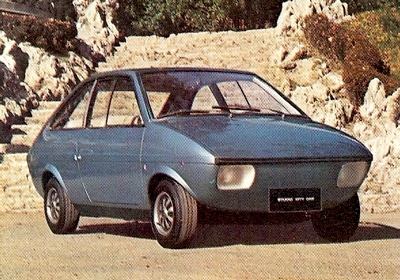 The De Tomaso Rowan was produced in collaboration with Ghia.
The De Tomaso Rowan was produced in collaboration with Ghia.
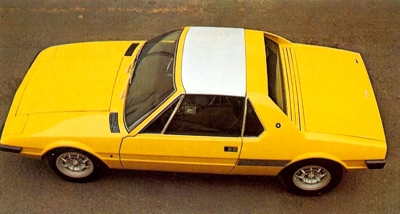 The mid-engined De Tomaso 1600 used a sixteen valve 1600cc Ford BDA engine. It was never put into serious production.
The mid-engined De Tomaso 1600 used a sixteen valve 1600cc Ford BDA engine. It was never put into serious production.
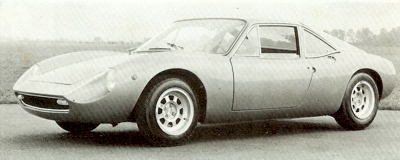 The first of the De Tomaso's was the 1500cc Ford Engined Vallelunga. Originally the car was an open two-seater, but in 1965 Giugiaro produced this attractive coupe design.
The first of the De Tomaso's was the 1500cc Ford Engined Vallelunga. Originally the car was an open two-seater, but in 1965 Giugiaro produced this attractive coupe design.
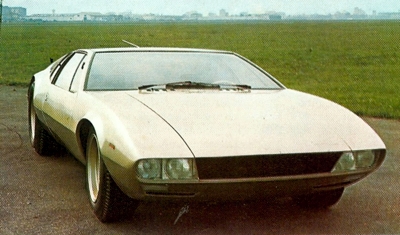 The car that turned around the fortunes of De Tomaso - The Mangusta.
The car that turned around the fortunes of De Tomaso - The Mangusta.
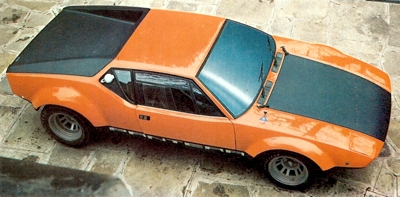 The De Tomaso Pantera enjoyed growing popularity in the US.
The De Tomaso Pantera enjoyed growing popularity in the US.
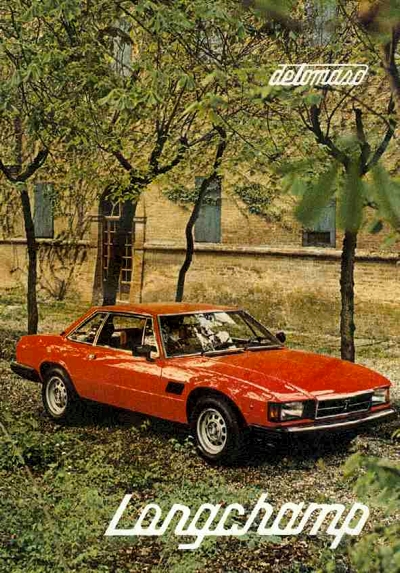 The De Tomaso Longchamp.
The De Tomaso Longchamp. |
In the early 1960s, the Italian Grand Prix was usually on the banked circuit, the broken surface of which played havoc with the fragile suspensions of Grand Prix cars. In conjunction with a metallurgist, de Tomaso developed a metal which had a degree of elasticity incorporated, so that, instead of breaking when used in the suspension of a racing car, it would bend, then return to its normal shape. He went to the expense of casting special wishbones before realising that when his suspension arms bent they would alter the steering geometry of the car, and, if the car hit a very bad bump, the chassis would hit the ground. Again the idea was dropped.
The Monocoque-Chassis Lotus 25
When the monocoque-chassis Lotus 25 appeared, de Tomaso decided to go one better than the rivetted aluminum structure of the Lotus and cast his complete Formula One chassis in one unit. The design was completed and the 'bathtub'-type monocoque chassis was cast in magnesium at horrific cost. Undoubtedly, this provided a very stiff chassis, but it allowed no room for alterations if the design was not right first time, so once again the idea was scrapped.
The Vallelunga
De Tomaso began to turn his thoughts towards road cars and in 1964 he brought out the Vallelunga, an open two-seater which, again, was unconventional. It used a tubular, central-backbone chassis with a British Ford It-liter, four-cylinder engine mated to the rear of this chassis, just ahead of the rear wheels; a four-speed rear-mounted gearbox and final drive took the power to the rear wheels. The car featured double-wishbone suspension on all four wheels and disc brakes all round, and it was clothed in a neat, all-enveloping aluminum body. The engine was tuned to give 100 bhp at 6200 rpm and de Tomaso claimed a top speed of 130 mph.
Giorgetto Giugiaro
Alas, few, if any, were ever sold. However, de Tomaso persevered with this backbone chassis idea and in 1965 the young body designer Giorgetto Giugiaro, who was working at that time for Ghia, the bodybuildingfirm, designed an attractive coupe body for the Vallelunga. This provoked a great deal of attention, and was put into production at the Ghia factory. However, the few people who drove the car reported that the engine transmitted a great deal of vibration through the central backbone, while the rear suspension, mounted partly on the engine! gearbox unit, was insufficiently rigid. Once again, a de Tomaso car disappeared.
De Tomaso decided to carry on with the idea and he designed a bigger version with a tuned Shelby-Cobra, Ford V8 engine mid-mounted. American designer Pete Brock drew up an open, two-seater body for the car which was notable for a large aerodynamic spoiler across the tail; this was linked to the fifth gear so that it flattened when running at maximum speed, but was angled downwards in other gears to give extra adhesion at the rear.
The De Tomaso Mangusta
The idea was to race the car, starting with the
Sebring 12-Hours of 1966, but it never competed. However, the idea of a big, mid-engined sports car continued to germinate in de Tomaso's mind and he asked Ghia to design a body for the car. They set Giugiaro to work and he came up with a breathtakingly beautiful body, of classic simplicity, which was the star of the 1966 Turin Show. Mechanically, the car was essentially the same as the Vallelunga in concept, but the big, 4.7-liter Ford V8 gave a claimed 418 bhp (or 506 bhp with fuel injection) and was mated to a five-speed ZF gearbox. Access to the engine bay was via a pair of vast gull-wing doors, which gave the car a very futuristic appearance.
Initially, the car was known as the Ghia Mangusta (Italian for mongoose), but de Tomaso soon renamed it the De Tomaso Mangusta when he realised that he had a successful production car on his hands. Things now began to happen for de Tomaso; his wife persuaded her brother, it director of an American firm, Rowan Controls, to take a financial interest in the De Tomaso factory and also to take over Ghia, who were in financial difficulties.
Gian Paulo Dallara
It wasn't long before the car was being heavily promoted in the US and, before long, de Tomaso was presented with an order for 300 Mangustas a year from America. A new factory was acquired in Modena and production got under way in 1968. Unfortunately, the Mangusta had a number of design faults: there was too much weight at the rear of the car and it handled badly, while the passenger accommodation was rather claustrophobic.
In a bid to solve these problems, de Tomaso acquired the services of Gian Paulo Dallara, the very talented Lamborghini designer, largely because he promised Dallara that he could build a Formula One car. During the 1960s, de Tomaso had continued to dabble in racing-car design, but nothing ever got to the stage of actually racing. He envisaged an Indianapolis car, then offered an overhead-camshaft version of the Ford V8 to Indianapolis teams, even claiming that Lotus would use his engine, but the special four-cam Ford engine ended that plan.
However, he was as good as his word to Dallara and in 1969 the company built a Formula Two car powered by a Cosworth FV A engine which featured a well made monocoque chassis using magnesium bulkheads. Jacky Ickx, Piers Courage and Jonathan Williams raced the car, which proved to be quite competitive, but failed to win a race. Encouraged by the F2 car, de Tomaso decided to build a Formula One car and reached an agreement for private entrant Frank Williams to provide Cosworth DFV, 3-Iitre engines and enter the car in the 1970 World Championship series.
The Pantera
The car began to perform quite creditably in the hands of Piers Courage, who finished third in the
Silverstone International race but, during the Dutch Grand Prix, Courage crashed heavily and was killed. On the production front, Dallara decided that the best thing to do with the Mangusta was to redesign it completely; so it eventually appeared as the Pantera with a completely new body and revised chassis and suspension.
The Pantera proved to be a much better car and was well received by the motoring press and customers alike. Not content with the success of the Pantera, de Tomaso also built a city car, the Rowan, powered by a 500 cc motor-cycle engine, the Deauville, a big front-engined, four-seater reminiscent of a Jaguar XJ6, the Longchamp and the De Tomaso 1600, a transverse, mid-engined Ford BOA-powered coupe using Vallelunga suspension, which many people claimed was a copy of the Fiat X19. None of these cars ever got into serious production.
The Ford Motor Company began to show a great deal of interest in the Pantera which they envisaged as a successor to the virtually stillborn GT 40 road car. They already supplied standard Ford 5-liter V8 engines for the car and eventually de Tomaso agreed to sell both his company and Ghia to Ford. By 1974, Ford were producing the Pantera in Italy and using the Ghia studios for advanced design work, while de Tomaso had the sales franchise on the Pantera in most parts of the world apart from the USA. He was also free to build special versions of the Pantera for racing or road use and to develop new de Tomaso designs for both racing and production purposes.
In 1973 a “GTS” version was introduced in Europe, a highly tuned Cleveland engine now affording 350bhp and making the car good for a (claimed) top speed of 175mph. But by 1974 the luster of the marque was beginning to tarnish. Ferocious rust plagued the cars, and this combined with reliability problems and suspect handling. Add the mid-1970’s fuel crisis and it was obvious the days of the de Tomaso were quickly drawing to a close. Ford gave up it’s de Tomaso links (although it would retain Ghia), and the Pantera and a few other models would continue in extremely limited production into the mid 1980’s.
Also see: Lost Marques - De Tomaso (AUS Edition)